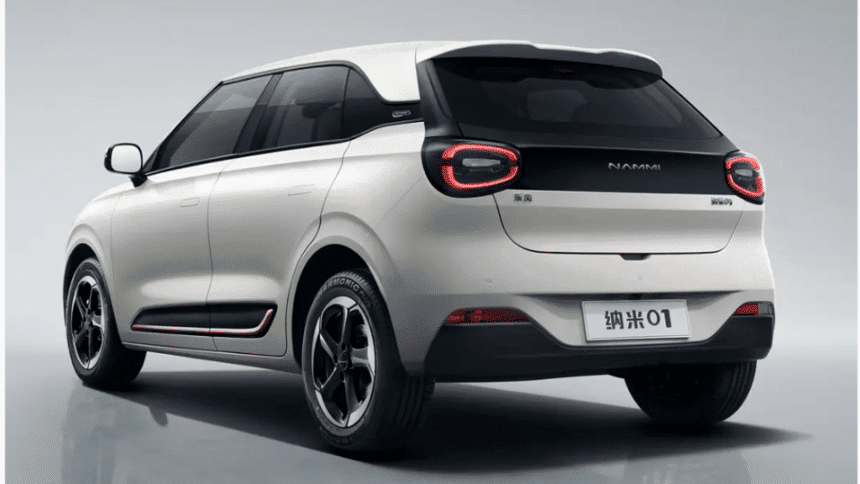Sign up for daily news updates from CleanTechnica on email. Or follow us on Google News!
Are Hansen is in charge of the CleanTechnica news bureau in Norway, where he supervises a staff of minions whose job it is to report on the latest electric car news in Scandinavia. This week, he alerted us to two stories that should be of interest to our readers. First, the Dongfeng Box battery electric SUV-like car will be imported into Norway soon. Second, Denmark is creating charging parks along their highways that are so lovely and delightful that drivers will want to visit them just for the experience. Charging will be secondary.
Dongfeng Box Coming To Norway
Dongfeng Motor is a state-owned manufacturing company that makes a full line of passenger cars and heavy-duty trucks. Some of the brands in its portfolio include Nammi, Voyah, and M-Hero. Last year it introduced the Dongfeng Box electric SUV, which is a close cousin to the Dacia Spring sold in Europe. Nomenclature is a tricky thing for Chinese companies. The car coming to Norway will have the Dongfeng logo on the hood and the Nammi name in script on the rear, but it is a Dongfeng Box for all intents and purposes.
We will get to the specs in a moment, but the most important thing about the car is that it will sell for less than 200,000 NOK in Norway — equivalent to 17,000 euros or 18,000 dollars. Final pricing is yet to be determined, but the importer, Electric Way, has said it will price the car very aggressively in Norway, “even if they have to bleed.” Google Translate is a wonderful tool, but it may not always get the nuance of various languages exactly right. It sounds as though the importer is saying the car could be priced very aggressively, even if the profit is minimal.
When Are first emailed me about the Dongfeng Box, my first reaction was that it was a nice looking car that is quite inexpensive. But he said I missed the whole point, which is that it is not only an inexpensive electric car, it is the cheapest new car you can buy in Norway — period! It costs less than any vehicle powered by a gasoline or diesel engine, hydrogen fuel cell, or moon beams. Now competitors will be faced with the dilemma of how to make conventional cars that don’t cost more than an EV!

Elbil, the official news outlet for the Norwegian Electric Car Association, says the Dongfeng Box is four meters long, 1.8 meters wide, 1.57 high, and has a wheelbase of 2.6 meters. For those who insist on measuring things based on the length of a British monarch’s shoe, that is 13 feet long, 6 feet wide, 5 feet high, with a wheelbase of 8.5 feet. To put those dimensions into perspective, it is as big as the Jeep Avenger, Opel Corsa-e, and Peugeot e-208. In other words, it’s a real automobile, just a very inexpensive one.
Specs are absent from the Elbil article, but I did find some relevant information on a website for the Philippines, where a version of the Dongfeng Box is sold. It says the car has a 28.9 kWh battery and a single electric motor rated at 44 hp and 125 Nm of torque that powers the front wheels. Range is said to be 351 kilometers (218 miles). However, that figure is measured using the highly optimistic Chinese standard. WLTP will likely be more like 250 kilometers or fewer. Actual range will likely be a little more than the first-generation Nissan LEAF, which had a 24 kWh battery.

But that is somewhat irrelevant. The Dongfeng Box is not a luxury touring machine for whisking wealthy Norwegians from the fjords of home to the French Riviera. It is a city car, pure and simple. Seen through that lens, it is quite an appealing package. The dash is uncluttered with a digital instrument display in front of the driver and a central touchscreen that manages all of the car’s controls. The front seats recline fully so two people can sleep in the car (cue Carly Simon’s Dan My Fling).
The glovebox has been replaced by a slide-out drawer and the seats are covered in some fabric that is supposed to resemble the look and feel of leather. There are even cameras and sensors that allow the car to park itself. All in all, the Dongfeng Box is a full featured urban runabout for a very small price. Now to see how customers in Norway feel about it. The car is no Tesla Model 3, but at that price, it doesn’t have to be. If European manufacturers are worried about cheap cars from China, the Dongfeng Box is likely to keep them wide awake at night.
Luxury EV Charging In Denmark

Another story in Elbil caught the attention of our crack reporting team in Norway. It seems that Denmark has taken the EV charging conundrum and turned it into a positive by creating charging parks that are so appealing that people may visit them just for the pure joy of being there. Instead of focusing on how long it takes to charge, these islands of indulgence will make drivers want to stay longer.
Norlys, a Danish energy and technology company, is constructing 15 EV charging locations in Denmark, five of which will be designed in cooperation with Experimentarium. It calls those charging parks “experience universes” where families can enjoy wholesome activities instead of grumbling about how long it takes to charge their cars.
“Electric cars are experiencing momentum at the moment, but if we are to have even more people choose a greener car and reach the government’s target of one million electric cars on the roads, we must expand and develop the infrastructure. It should be easy to charge, when you are on the move and at a transparent price. The turntable is a traffic hub, and therefore it is obvious that the first of a series of Norlys charging parks will be built here,” says Ellen Trolle, director of the charging division of Norlys.
All 15 Norlys charging parks will be established as a respite on the move where motorists can buy drinks, food, and snacks or stretch their legs in a green area, while the fast chargers prepare motorists for the next journey. At the same time, Norlys charging should be an experience.
“Our lightning chargers are fast, but it only takes a little longer to charge than refueling a traditional fuel car. We therefore arrange our charging stations in such a way that you don’t have to sit and twiddle your thumbs or juggle children who are bored in the back seat. With our concept, we hope to set a completely new standard for how to create ‘charging joy’ and thereby motivate even more Danes to take the leap to electric cars,” says Trolle.

Experimentarium will develop a number of activities close to the charging station. Five of the 15 locations will be equipped with a very special experience universe under the theme “The hunt for good energy.” Each of these experience universes will feature interactive activities that focus on a green future.
“We hope, of course, that when the children spot the red Norlys logo from the back seat in the future, they will beg their parents to take a charging break with us, because we make it fun and inspiring to take a break. We hope that we can start thinking with young and old and provide inspiration for good dialogues in the car on the road ahead,” Trolle explains.
What a concept. Take a negative and turn it into a positive. In the future, people may actually look forward to charging their electric cars rather than dreading it. With luck, other charging networks will hear about this idea and incorporate it into their own designs. This is a complete cultural shift from the “gas and go as fast as possible” model that afflicts owners of gasoline and diesel powered cars. Danish modern design is extremely popular in many countries. Perhaps the Danish concept of charging in an “experience universe” will find favor elsewhere as well.
Have a tip for CleanTechnica? Want to advertise? Want to suggest a guest for our CleanTech Talk podcast? Contact us here.
Latest CleanTechnica.TV Video
CleanTechnica uses affiliate links. See our policy here.





